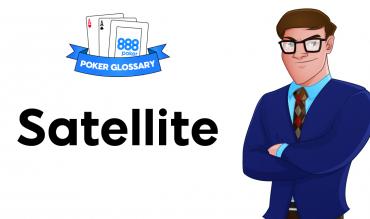Explanation of Satellite
Satellite tournaments are also referred to as “qualifiers”.
Sometimes online sites offer a chain of satellites (perhaps referred to as “steps”) leading to a big event. The smallest satellite (perhaps called step 1) award a place in the next satellite up the chain (perhaps called step 2) and so on.
The goal is to make big buy-in events such as the WSOP (world series of poker) accessible to players with a small bankroll. There are success stories on the internet of players finding themselves at the WSOP after starting out with a $0.01 satellite. Perhaps the most famous WSOP win of all time was that of Chris Moneymaker in 2003 who also qualified for the tournament via a satellite.
Example of Satellite used in a sentence -> Many big tournaments such as the WSOP offer satellite events for players who are looking to win a ticket online.
How to Use Satellite as Part of Your Poker Strategy
The structure of a satellite tournament should be analysed carefully since the prize structure is often less “top-heavy” than other types of tournament. In many satellite tournaments, the top X places will offer an identical payout (i.e. a ticket to the bigger tournament).
The ICM implications of such prize structures is that players are incentivized to enter “folding wars” near the bubble. It’s hardly ever correct to put our stack at risk if there are players with smaller chip stacks about to bust out. These ICM effects are similar to double-or-nothing sit-n-goes where it can often be better to fold Aces on the bubble rather than put our stack at risk.
See Also
Tournament, Bubble, ICM, Fold, WSOP


